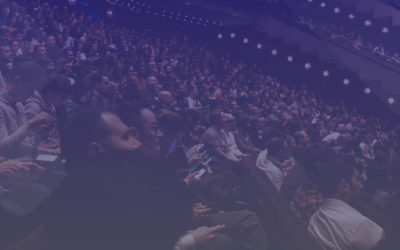Baker Richards > Insights > Comment > Creating the post-pandemic future of arts, heritage and culture
Creating the post-pandemic future of arts, heritage and culture
December 14, 2020
Comment, Performing Arts
Categories
Tags
AAA of Income
Affiliation
Ancillary Sales
Audience Development
Behavioural Economics
Behavioural Segmentation
Business Planning
Conjoint Analysis
Consumer Psychology
Coronavirus
Discounting
Donations
Dynamic Pricing
Event Coding
Forecasting
Fundraising
Leadership
Marketing
Market Research
Membership
Modelling
Popular
Price Elasticity
Pricing
Pricing for digital
Primary Research
Repertoire Scoring
Resilience
Revenue Management
Revenue Management Application
Secret Seats
Segmentation
Segmentation Engine
Strategy
Subscription






Whether it’s a banking credit crunch, an Icelandic volcano erupting, or a global pandemic – we’re regularly reminded of the fragility of our everyday way of life. Too frequently, we see the ease with which the things that we collectively take for granted can be disrupted.
As we near the end of 2020 it’s beginning to feel like we’re turning a corner – we’ve seen organisations begin to adapt to a pandemic environment, we’re getting close to mass vaccination, and dare I say for some of us even the outcome of the US Presidential election points to a more positive future…
And it was one of America’s most notable past Presidents, Abraham Lincoln, who said something which I have repeated a lot this year as my team and I at Baker Richards have helped organisations to navigate this crisis – “the best way to predict the future is to create it.”
Make no mistake that one thing globally disruptive shocks often show over time is that the new normal can have a remarkable tendency to look a lot like the old normal. But as a cultural sector we have used this year to explore and confront some realities around our business models. To reflect on who has a stake in decision making, and who doesn’t, and why? Who benefits from our work, and who doesn’t, and why? Who has employment security, and who doesn’t, and why? To acknowledge deep-seated failures of social and racial justice.
It’s been genuinely existential – but it’s vital and useful work when, pandemic aside, one of the things we have been grappling with over a far longer period of time is the emergence of identity politics. Certainly in the UK this is a country which has wrestled for a decade or more with one huge question – “who are we”? We are nowhere near an answer yet, but a healthy and widely relevant cultural sector is vital to settling that question.
In 2019, before the Arts Council England released their 10 year strategy “Let’s Create”, a debate briefly raged around that word – ‘relevant’. It was presented by some as a false dichotomy – a forced choice between relevance on the one hand and excellence on the other. Neither is a dirty word, you can have both, and it’s useful to aim for both, while knowing that any organisation which strives for relevance and excellence will hit bumps in the road, and will take the odd wrong turn, but any organisation working in pursuit of relevance and excellence can only ultimately be headed in the right direction.
So if the best way to predict the future is to create it, what future will we create together? And coming back to relevance, who is the ‘we’?’ in that question? Who’s involved?
The months spent locked down have clearly lit some beacons for the future. We’ve seen how valuable partnerships can be, how reaching beyond our organisations makes the impossible possible, or can amplify what may otherwise have had a lesser reach. We’ve seen a glimpse of the potential of digital. Many have felt what it is to be grossly and unfairly excluded, and will have fresh impetus to ensure that the work we do in future is inclusive of all. We’ve realised that many, perhaps the majority, of people still don’t truly understand the benefits of our cultural ecosystem. And we’ve been confronted with just how dangerous that can be.
The six capitals
There’s a standard for writing company reports which has been around for 10 years now called Integrated reporting, or <IR>. It’s dry and technical but it describes how organisations create value, rather than simply making money. There are six capitals at the heart of IR – these are stocks of things which exist already, which your feed into your organisation, your organisation transforms them, and out they ’emerge’, transformed on the other side. So, a for-profit business takes in financial capital (money), transforms it, and will usually aim to output greater financial capital (more money). But beyond that, there’s:
The UK’s Department of Culture Media and Sport are in the process of designing Culture and Heritage Capital, which looks like it will work in a similar way.
Why is this relevant? I’ll come to it in a moment.
The best way to predict the future is to create it, to actively focus on creating and shaping that future, and it’s often the case that we manage those things that we measure and monitor. So in the past, if the KPIs for a marketing team have been only ticket volumes sold or revenue generated or seats filled or exhibition capacity sold, then it’s little wonder that for a sector whose very purpose is to protect and share a universe of stories, we can be pretty poor at telling the stories of our own organisations and the impacts they have. It’s little wonder that attention narrows to maximising income from a core of loyal attenders at the expense of a broad and diverse audience and visitor base. It’s little wonder that social discounts and concessions are cut, and we build processes where those in the know can play the system to their advantage.
Without ever intending to, and indeed while often intending to do the exact opposite, what we do, how we do it and to whom we choose to talk about it, ends up putting up barriers to participating in culture. As a sector we have more work to do on our own Excluded.
The future for culture – certainly culture which is created with the support of public money – will be better safeguarded against future shocks when the collective impact of our organisations across all of those six capitals I mentioned earlier is better recorded, more consciously, collectively and actively managed, and yes – creatively communicated.
Expressing value
So I started out by saying it feels like we’re turning a corner. And as we turn that corner it’s vital that we come out of the other side with clarity about capturing, managing, and expressing our value.
So that involves listening – I recommend the Culture Restart Toolkit from the Insights Alliance to feed into your decision making.
It involves adaptive, responsive planning in all areas of our work – if you’re not familiar with the Cynefin framework, you may find it helpful and you’ll find a great introduction to it from my colleague David Reece on Arts Professional.
A playbook approach may be valuable to you, and in fact thinking about the toolkit that arts marketers rely on, it involves structured, targeted approaches to segmentation, thoughtful variable pricing linked to audience development objectives for the work we create and share, richer forecasting, sophisticated use of CRM coupled with the resources to reach beyond our database, beyond our walls. For all of these things, the Insights section on the Baker Richards website will, I hope, give you some inspiration.
We don’t yet know what 2021 and will look like, but I’ll leave you with what I hope is now a familiar message – the best way to predict the future is to create it, and thrillingly, importantly, the time is now coming to create the future of culture together.